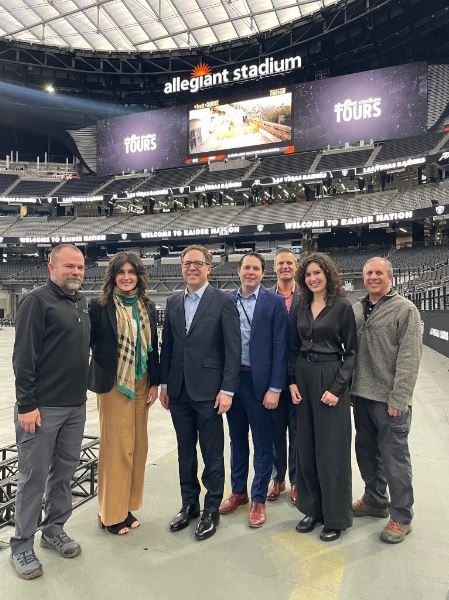NTIA Blog
The Impact of Women Breaking Digital Access Barriers
In today's digital world, access to technology and the Internet enables boundless opportunities. Now more than ever, women and girls are seizing these opportunities to smash barriers and soar to new heights.
For women and girls, achieving digital equity is more than gaining access to the devices and connectivity that empower them – it is also about safeguarding their journey.
As we celebrate International Women's Day, read on for three reasons why digital equity is a game-changer for women and girls’ empowerment.
1. Empowering through Education and Workforce Opportunities
Digital equity ensures equitable access to education and workforce opportunities. By providing women and girls with access to online learning platforms, educational resources, and digital skills training programs, they get the tools they need to thrive in a technology-driven society. This access to education opens doors to diverse career paths, from STEM fields to entrepreneurship, enabling women and girls to challenge the status quo in male-dominated sectors and pursue their aspirations without limitations.
By tapping into these opportunities, women and girls can achieve financial independence, contribute to household incomes, and challenge societal norms that perpetuate gender disparities in the workforce.
Louisiana’s New Crop of Fiber Optic Technicians
Celebrating Black History Month: A Q+A With Dr. Jon Gant
An American-Made Internet for All
By: Will Arbuckle, Senior Policy Advisor, NTIA
President Biden and Vice President Harris made a historic commitment to connect everyone in America to affordable, reliable high-speed Internet service while creating good-paying jobs and boosting American manufacturing.
Under the Administration’s Internet for All initiative, a core piece of President Biden’s Investing in America Agenda, made-in-America requirements and historic funding for high-speed Internet infrastructure have already spurred significant progress towards that goal.
Heeding President Biden’s call, numerous companies are now onshoring and expanding domestic manufacturing and creating thousands of good-paying jobs in communities across the country.
Furthering the goals of the President’s agenda to expand access to high-speed Internet service across America, today, NTIA released a Build America, Buy America (BABA) waiver for the $42.45 billion Broadband Equity, Access, and Deployment (BEAD) Program. The waiver and an FAQ are available on the Department of Commerce Office of Acquisition Management site. This BABA waiver takes the strongest approach possible to protecting American jobs while also ensuring that we can quickly build the Internet networks.
Super-sizing safety communications for the Big Game
By Margaret Harding McGill, NTIA Senior Advisor for Public Affairs & Michael Varney, FirstNet Authority Director of Stakeholder Collaboration
Before the grass was even fully grown for the Big Game this weekend in Las Vegas, the First Responder Network Authority — or FirstNet Authority — team had scoured the Raiders’ stadium for dead zones to help ensure first responders would win big with the nation’s public safety communications network.
The FirstNet Authority is an independent authority within NTIA that is charged with ensuring the deployment of FirstNet®, the nationwide broadband network dedicated to public safety.

Events like the Big Game are major tests for FirstNet, and the FirstNet Authority team has put in long hours with our network partner, AT&T, to ensure that FirstNet passes with flying colors.
NTIA 2023: A Year in Review
How Public Input Helped Shape NTIA’s Approach to the Uniform Guidance in the BEAD Program
Investment Meets Impact: Celebrating the 2nd Anniversary of the Bipartisan Infrastructure Law
On November 15th, 2021, President Biden signed the Infrastructure Investment and Jobs Act into law. Better known as the Bipartisan Infrastructure Law, the statute designated $65billion to improve high-speed Internet access for people across America.
Two years later, NTIA and other agencies have distributed billions of dollars to communities to bridge the digital divide and make participation in the digital economy a reality for everyone. At NTIA, we completed funding rounds for multiple programs in the last year and are moving to the implementation phase, all the while preparing states and territories to administer their state grant programs. Here are some of our major accomplishments in Year 2 of Internet for All, from major milestones to stories of how this initiative is impacting people’s lives.
Moving the BEAD Program from Planning to Execution
